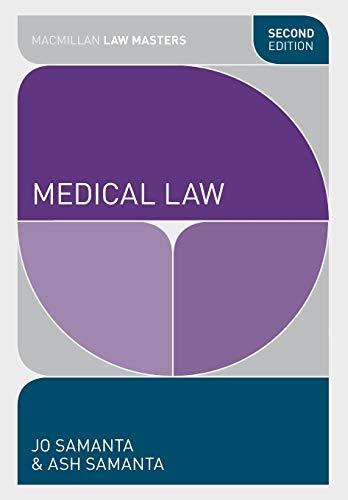Question
Consider Vosburg v. Putney, an 1891 Wisconsin case.Putney, age 11, kicked Vosburg, age 14, in the leg during school.The kick was not very hard -
Consider Vosburg v. Putney, an 1891 Wisconsin case.Putney, age 11, kicked Vosburg, age 14, in the leg during school.The kick was not very hard - the jury found that "defendant, in touching the plaintiff with his foot, did not intend to do him any harm."However, Vosburg was recovering from an earlier sledding injury to the same spot, and the light kick somehow caused Vosburg to permanently lose the use of his leg.The court ruled that, even though Putney had no way of knowing Vosburg was so fragile, he (his parents) was liable for the harm done.
This is an example of the "eggshell skull" principle in tort law - even if someone has a skull as fragile as an eggshell, if you tap them on the head and break their skull, you're still liable.This is also described as the doctrine that "we take our victims as we find them."
(a)This is a case of strict vicarious liability - Putney's parents are being held liable for Putney's action, and Vosburg did not need to prove that the parents themselves were negligent in how they had raised Putney.Give an argument why a strict vicarious liability rule makes more sense than a negligent vicarious liability rule, or an argument why a negligence vicarious liability rule would be better.
Step by Step Solution
There are 3 Steps involved in it
Step: 1

Get Instant Access to Expert-Tailored Solutions
See step-by-step solutions with expert insights and AI powered tools for academic success
Step: 2

Step: 3

Ace Your Homework with AI
Get the answers you need in no time with our AI-driven, step-by-step assistance
Get Started


